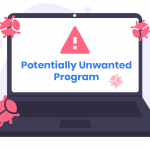In the ever-evolving landscape of cyber threats, the “Final Price” phishing scam has emerged as a deceitful attempt to trick recipients into divulging their email account credentials. This article aims to shed light on the intricacies of the “Final Price” phishing email, its potential consequences, and effective preventive measures.
Actions and Consequences
The “Final Price” phishing email, often camouflaged as a communication related to a new order, utilizes false claims and a seemingly harmless attachment to lure recipients into a phishing trap. The attached file, typically named “Document023.html,” acts as the gateway to a phishing website when opened.
Upon opening the HTML document, victims are redirected to a deceptive webpage that mimics an “Adobe PDF” login window. The unsuspecting user is prompted to enter their email account credentials, falling prey to the phishing scam. Once obtained, these credentials become a gateway for cybercriminals to exploit the victim’s online presence.
The consequences of falling victim to the “Final Price” phishing scam are severe and multifaceted. Cybercriminals can misuse compromised email accounts to steal identities on various platforms, propagate scams, and even solicit funds from the victim’s contacts. Additionally, access to sensitive or confidential information may lead to potential blackmail or other malicious activities.
Similar Threats
The “Final Price” phishing scam is part of a broader landscape of email-based threats that leverage social engineering and deception. Similar threats include various phishing emails posing as legitimate entities to trick users into revealing sensitive information or performing actions that compromise their security.
Removal Guide
- Do Not Open Suspicious Emails:
- Exercise caution with emails from unknown or unexpected sources.
- Be skeptical of emails claiming to contain urgent or sensitive information.
- Avoid Clicking on Unverified Attachments: Refrain from opening attachments or clicking on links in emails unless you can verify the sender’s legitimacy.
- Verify Email Addresses: Double-check the sender’s email address for any discrepancies or suspicious elements.
- Enable Two-Factor Authentication (2FA): Enhance your email security by enabling 2FA to add an extra layer of protection.
Preventive Best Practices
- Educate Email Users: Raise awareness among email users about common phishing tactics and the importance of verifying email legitimacy.
- Regularly Update Passwords: Change passwords regularly to mitigate the impact of potential credential exposure.
- Security Awareness Training: Provide security awareness training to employees or individuals to enhance their ability to identify phishing attempts.
- Use Advanced Email Security Solutions: Employ advanced email security solutions that can detect and filter out phishing emails before reaching the inbox.
By understanding the actions and consequences of the “Final Price” phishing scam and implementing the provided removal guide alongside preventive practices, users can fortify their defenses against email-based threats. Vigilance and a proactive approach to email security remain crucial in safeguarding against evolving cyber threats.





